This fly is originally meant to be an imitation of a small clamworm like a small Nereis, but can be considered a generic pattern more than an exact imitation of these polychaetes. It takes its outset in the red body feathers of the Golden Pheasant.
The Omoe Brush could have been called the Brush from Om Island (Omø in Danish), but Omoe Brush is more like the Danish name. Pronounce the word Omoe as uhm-eh, and you will sound almost Danish.
The name refers to clamworms or ragworms, which are literally called brush worms in Danish, and the fact that the originator Ken Bonde Larsen tied the fly first on the island Om in Denmark.
It's originally meant to be an imitation of a small clamworm like a small Nereis, but can be considered a generic pattern more than an exact imitation of these polychaetes. The color and materials are quite simple. Taking its outset in the red body feathers of the Golden Pheasant, the Omoe Brush is a rich, rusty nuance of red, and as such not a complex fly. It's simple to tie, and uses only three materials in its basic form: a bit of flash, rusty brown yarn and the red body feathers.
The fly has since branched out a bit, and Ken ties a smaller variation using red-brown chenille and bead chain eyes. But apart from that he has staid very true to the fly as it was first tied.
I have tied and caught fish on versions using the yellow pheasant feathers in combination with a light tan body rather than the red ones over a dark body. This version of the fly looks much like a yellowish shrimp, but most of my Omoe Brushes have been red like Ken's original.
The alternative hackling method, which is described further down in this article came even later, and is just a way of hackling, which to some tiers are easier than winding the short-stemmed and fragile pheasant feathers.
|
|
|
|
|
|
|
|
|
|
|
|
|
|
|
|
|
|
|
|
|
|
|
|
|
|
|
|
|
|
|
|
|
Tiling the hackle
If you struggle with the short and brittle hackle stems of the Golden Pheasant body feathers, you can consider two strategies: treat your Golden Pheasant skin with hair conditioner to soften and strengthen the feathers or use a simple "tiled" hackle technique as shown here:
|
|
|
|
|
|
|
|
|
|
|
|
|
|
|
|
|
|
|
|
Smaller version with eyes
The last version of this fly is tied on a smaller hook, has a set of bead chain eyes and has only two body sections and two hackles. This is a typical autumn fly here and can be tied down to a size 10 hook. Select chenille or yarn as well as feathers that suits the size of the final fly, which can be fairly thick bodied.
|
|
|
|
|
|
|
|
|
|
|
|
|
|
|
|
- Log in to post comments

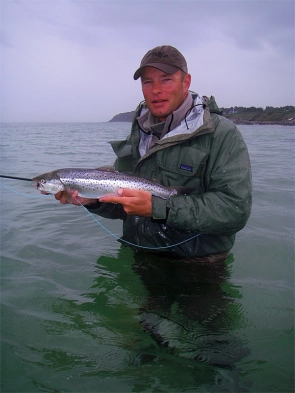
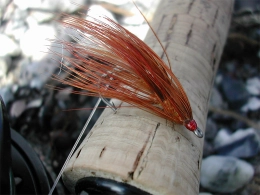

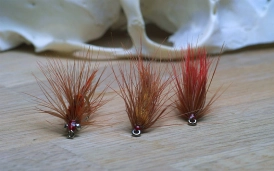

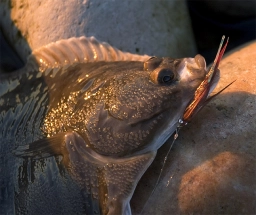
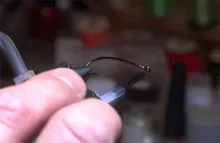
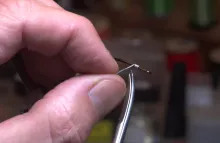
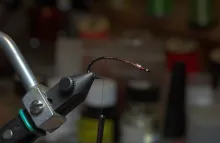
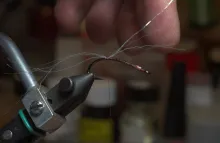
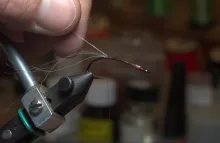
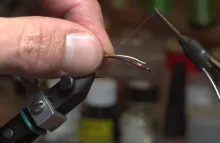
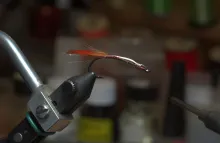

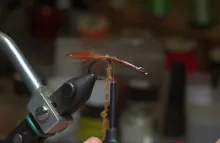
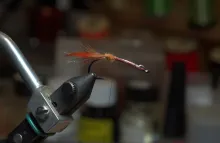
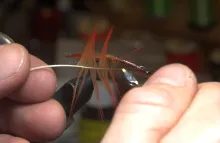
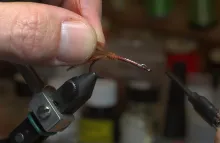
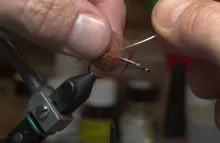
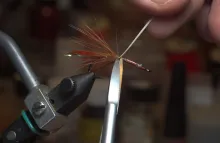
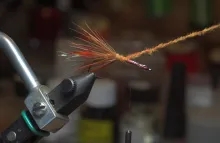
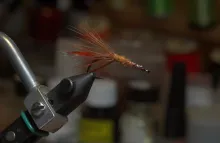
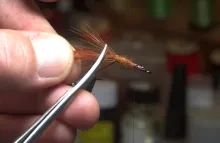
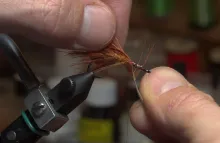
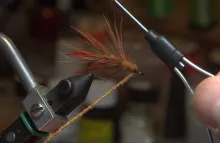
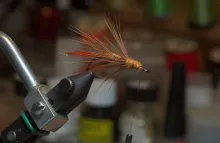
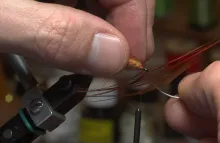
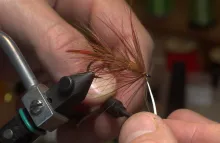
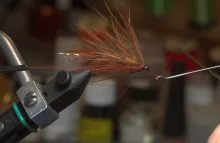
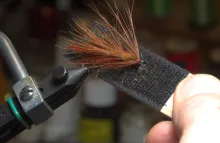

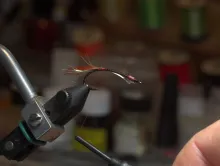
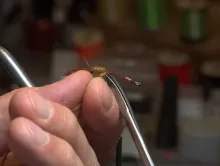
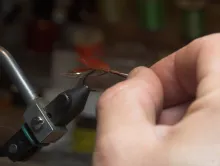
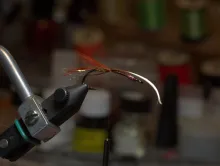
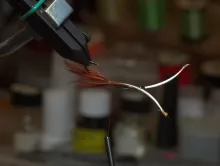
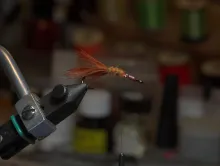



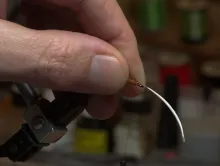
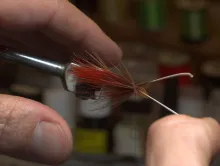
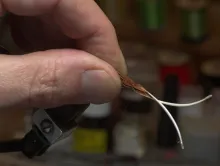
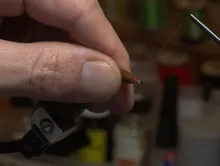
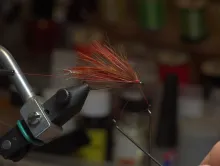
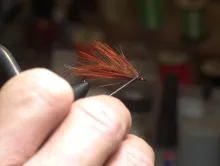







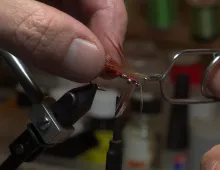
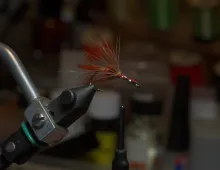





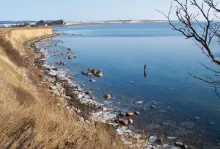

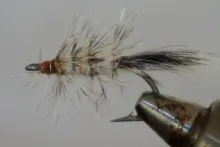
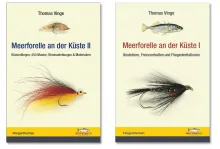

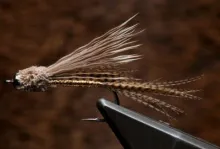

Must say that this f
Must say that this fly is the best !!! I found it at Bornholm 2005 , and have fished it since then. Here at Åland nearly all locals use that fly today! Tight lines! Niclas
Very similar fly in
Very similar fly in orange color with spectra flash dubbing body has caught a lot of sea trout especially in the beginning of the season. It has been very popular in group of Czech flyfishers till the pink pig comes :-)
Kelvin,
Hope you
Kelvin,
Hope you do well with the Omoe Brush. Let me know. Gold Pheasant is actually sometimes available dyed, and if you could get your hands on a blueish version, it might be worth considering for more naturally colored clam worm imitations for your waters.
I fished in Puget a long time ago, but had no luck (or skill), but certainly realized the potential there. With all those rivers and streams with spawning fish, there should be lots of options for fishing in the salt too.
Martin
Martin,
Thank you!
Martin,
Thank you! that is what I thought.
We have the same type of clam worms here (althought ours are a very blue in tint) and have always thought a pattern that looked like a clam or pile worm would be highly productive.
I have tied up a few and am planning on being on the water for our sea run trout this weekend.
Hopefully I will send you a few pictures of some hungry searun cutthroat in next few days.
Happy New Year!
Send me your address and I will send you some highly productive bait fish patterens
Good luck and tight lines... aka get some GRAB!
Love your sight and all the sharing on how to tie these flies!
I Live in USA in western Washington State in Seattle on Puget Sound and I love the thought of hooking a trout or salmon on a fly first tyed in Denmark truely a global experience!
Thanks again
Kelvin,
Stripping
Kelvin,
Stripping pattern is a very individual matter, which depends on what you are fishing for, where and many other factors. When used for sea trout here in Denmark, most flies are stripped in foot-long medium speed jerks. Nothing I would consider special in any way. The natural worms move in long, undulating movements, which cannot be imitated easily by this fly, but honestly I don't think it matters much. Do as you usually do with most flies where you fish, and I think you will be fine.
Martin
ok i just how to tie
ok i just how to tie it
how do you fish it
stripped slow or fast?
Mark, This fly is
Mark,
This fly is a far cry from the GP, and certainly no ripoff. As you can see from any recipe on the GP, the techniques used are clearly different although there might be a superficial similarity between the flies - very superficial if you ask me. We have the pattern for Poul Joergensen's GP online here, and you can clearly see the difference. The GP is supposed to look like a shrimp, has a flat back and distinct "eye spots" in the form of the GP tippet. Yes, both flies use red GP body feathers in sections, but that's not really enough to make them identical. This fly has hackles, the GP has flat feathers.
The Omoe Brush is as original as most flies you can think of. You know as well as I do that there are only few truly "original" fly patterns - at least not if you look at flies from that latest half century. New materials, new colors, new ways of combining things, but very few really new patterns. Even though new flies come out our vices spawned by our imaginations, most of them have seen the light of day before in someone else's vice.
Should this fly owe anything to anyone, it's certainly more likely to be the Swedish Ullsok-style, which again owes to the Irish shrimps, which again owe their legacy to even older salmon flies.
No, Ken's fly is original enough, I promise you, and certainly no copy of a General Practitioner. Still I would be delighted to tip my hat to Drury (and so would Ken, I'm sure), but for different reasons than originating this fly! We both tied and fished the GP, and thanks for that, colonel!
Martin
Let's be careful wit
Let's be careful with the term "originator". This fly is another simplification of the the great General Practitioner and other old shrimp flies. The GP is a fly that Ken Abrames has been using and recommending to saltwater fly fishers as a killer clam worm fly for striped bass for a long time. At least tip your hat to Col. Edmund Drury and his GP.